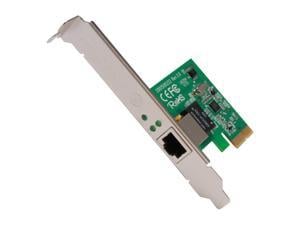Nic Expansion Slot
An expansion slot is a socket on the motherboard that is used to insert an expansion card (or circuit board), which provides additional features to a computer such as video, sound, advanced graphics, Ethernet or memory. The most common expansion slot is the PCI Express (Peripheral Component Interconnect Express (PCIe, PCI-e)) bus type. See #1 and #2 in the installation instructions at the bottom of this article to find out how to open up your computer case to check. The different PCI-e bus types. NIC is short for network interface card. It's network adapter hardware in the form of an add-in card that fits in an expansion slot on a computer's motherboard. Most computers have them built-in — in which case they're just a part of the circuit board — but you can also add your own NIC to expand the functionality of the system.
- The NIC that you select must also fit in an empty expansion slot on your computer's motherboard. On an IBM or compatible PC, you may have a number of choices, such as an ISA, PCI, or EISA slot. The slots available will depend on the motherboard (motherboards are discussed later in the chapter).
- Up to 24 DIMMs, PCI Express® (PCIe) 3.0 enabled expansion slots, and a choice of network interface technologies to cover NIC and rNDC. The PowerEdge R740 is a general-purpose platform capable of handling demanding workloads and applications, such as data warehouses, e-commerce, databases, and high-performance computing (HPC).
A riser card is a printed circuit board that picks up a multitude of signal lines (often bused) via a single connector (usually an edge connector) on a motherboard and distributes them via dedicated connectors on the card.

Riser cards are often used to allow adding expansion cards to a system enclosed in a low-profile case where the height of the case does not allow for a perpendicular placement of the full-height expansion card.
A riser card is a board that plugs into the system board and provides additional slots for adapter cards. Because it rises above the system board, it enables you to connect additional adapters to the system in an orientation that is parallel to the system board and save space within the system case.
Applications[edit]
Riser cards are used in rack-mount server and industrial computer applications. In 1U and 2U rack-mount computer systems, riser cards are integrated into the system to allow the addition of feature cards in a horizontal position (instead of a standard vertical position). This is due to the height limitations of a 1U and 2U system which are 1.75' and 3.5' respectively. Typically, a 1U system uses a 1U single slot riser card whereas a 2U system uses a 2U 3 slot riser card.Nowadays riser cards are often used by miners, for mining crypto-coins.These riser cards extended by USB-cable, are used to place GPU mining-cards in a so called mining-rack.
